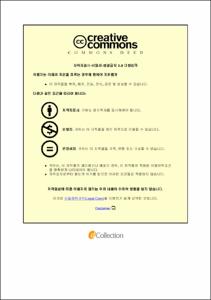Analysis of hepatic immune microenvironment using experimental NASH animal model
- Abstract
- Non-alcoholic steatohepatitis (NASH) is a dangerous disease that can progress to hepatocellular carcinoma (HCC) with an increasing prevalence worldwide. In parallel with this trend, the prevalence of NASH in Korean adult population has also increased. Because there are no approved drugs to treat it, research on NASH is being actively conducted. In particular, the need for research how changes in hepatic microenvironment affect the progression of the disease is increasing.
Considerable effort has been made to understand the role of hepatic immune cells in NASH. However, numerous questions remain. Our goal was to characterize the dynamic changes in immune cells residing in the liver as well as infiltrating from the outside, which were observed at the early stage of NASH using stelic animal model (STAM). Frist, we identified that the activity of monocyte-derived macrophages (MoMFs), which were circulating through the blood, became more pronounced as the non-alcoholic fatty liver disease (NAFLD) progressed. At the same time, we observed the proportion of M2 macrophages in the liver decreased throughout the disease. This was critical information that could indirectly infer that the balance of M1/M2 macrophages was disturbed at the early stage of disease. Next, we confirmed that CD8+ T cells increased proportionally with disease progression.
It is important to use the appropriate animal models that can represent humans in the research of disease. In that sense, the STAM model is a good animal model that can be induced from NAFLD to HCC in a short time period and can reflect clinical stratification in humans as well. Existing studies have presented many research results by inducing NAFLD through diet or chemicals, but these models do not induce HCC in a short time and have limitations in that similarity to humans is low. In this study, changes in hepatic immune microenvironment were first observed using flow cytometry and immunohistochemistry in the STAM model, which is considered to be most similar to clinical stratification. These results are expected to serve as an important basis for further studies.
- Issued Date
- 2022
- Awarded Date
- 2022-02
- Type
- dissertation
- Alternative Author(s)
- Hee Seon Lim
- Affiliation
- 울산대학교
- Department
- 일반대학원 의과학과 의과학전공
- Advisor
- 손우찬
- Degree
- Master
- Publisher
- 울산대학교 일반대학원 의과학과 의과학전공
- Language
- eng
- Rights
- 울산대학교 논문은 저작권에 의해 보호 받습니다.
- Appears in Collections:
- Medical Science > 1. Theses (Master)
- 파일 목록
-
-
Download
 200000600520.pdf
기타 데이터 / 2.43 MB / Adobe PDF
200000600520.pdf
기타 데이터 / 2.43 MB / Adobe PDF
-
Items in Repository are protected by copyright, with all rights reserved, unless otherwise indicated.